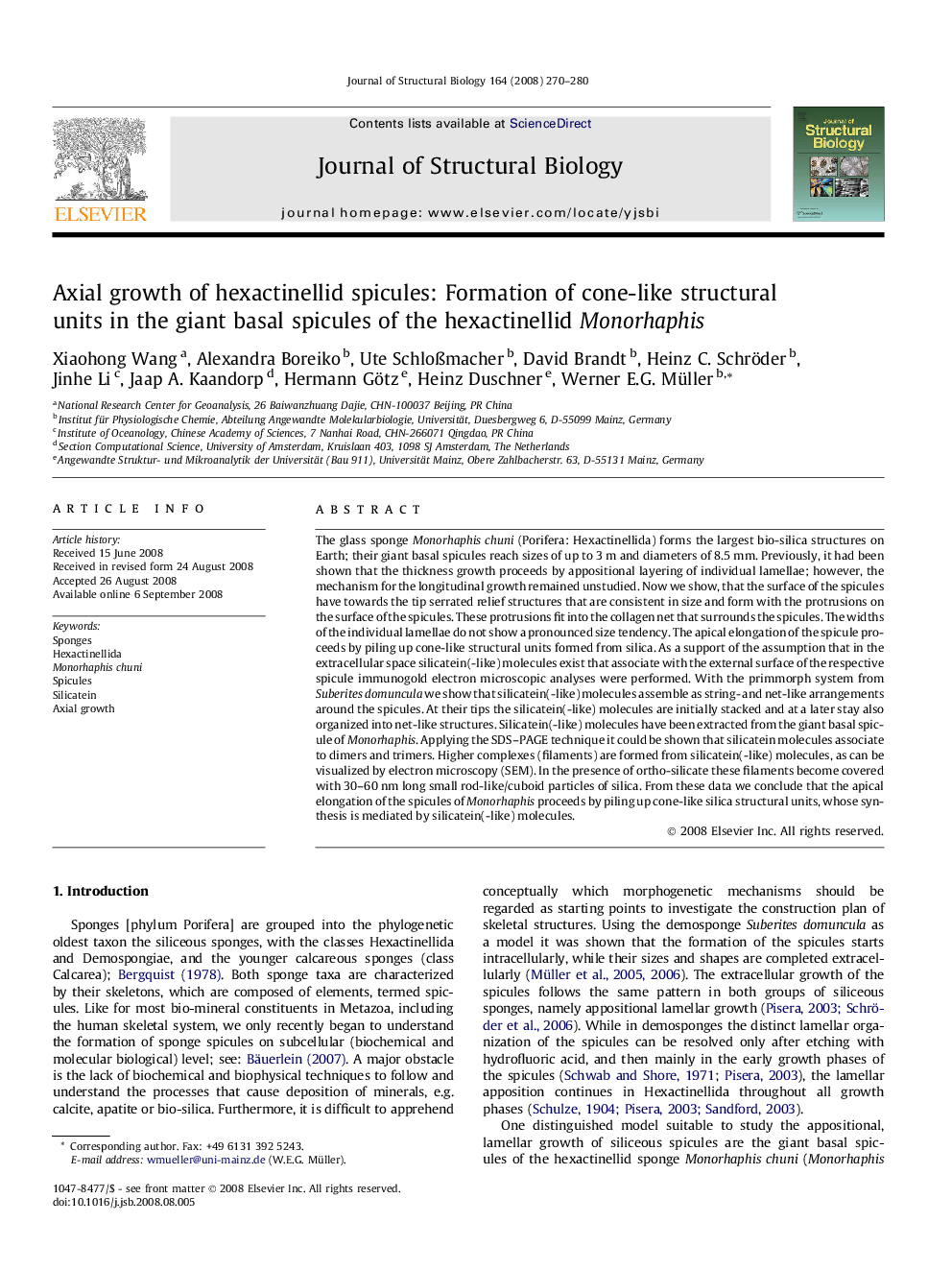| کد مقاله | کد نشریه | سال انتشار | مقاله انگلیسی | نسخه تمام متن |
|---|---|---|---|---|
| 2829137 | 1162787 | 2008 | 11 صفحه PDF | دانلود رایگان |

The glass sponge Monorhaphis chuni (Porifera: Hexactinellida) forms the largest bio-silica structures on Earth; their giant basal spicules reach sizes of up to 3 m and diameters of 8.5 mm. Previously, it had been shown that the thickness growth proceeds by appositional layering of individual lamellae; however, the mechanism for the longitudinal growth remained unstudied. Now we show, that the surface of the spicules have towards the tip serrated relief structures that are consistent in size and form with the protrusions on the surface of the spicules. These protrusions fit into the collagen net that surrounds the spicules. The widths of the individual lamellae do not show a pronounced size tendency. The apical elongation of the spicule proceeds by piling up cone-like structural units formed from silica. As a support of the assumption that in the extracellular space silicatein(-like) molecules exist that associate with the external surface of the respective spicule immunogold electron microscopic analyses were performed. With the primmorph system from Suberites domuncula we show that silicatein(-like) molecules assemble as string- and net-like arrangements around the spicules. At their tips the silicatein(-like) molecules are initially stacked and at a later stay also organized into net-like structures. Silicatein(-like) molecules have been extracted from the giant basal spicule of Monorhaphis. Applying the SDS–PAGE technique it could be shown that silicatein molecules associate to dimers and trimers. Higher complexes (filaments) are formed from silicatein(-like) molecules, as can be visualized by electron microscopy (SEM). In the presence of ortho-silicate these filaments become covered with 30–60 nm long small rod-like/cuboid particles of silica. From these data we conclude that the apical elongation of the spicules of Monorhaphis proceeds by piling up cone-like silica structural units, whose synthesis is mediated by silicatein(-like) molecules.
Journal: Journal of Structural Biology - Volume 164, Issue 3, December 2008, Pages 270–280